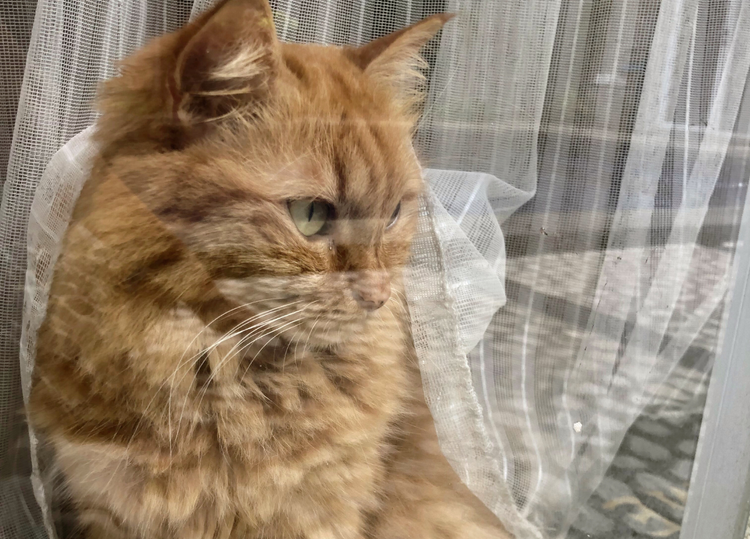How Do We Stay Connected When Communities Fracture?

I used to believe that if people just talked more, understood each other better, we'd bridge our divides. That empathy and communication were the primary tools needed to heal our fracturing communities.
I don't believe that anymore.
Not because connection is impossible, but because I've come to recognize that the fractures we're experiencing aren't simply the result of misunderstanding or poor communication. They're often manifestations of deeper systemic ruptures—deliberate outcomes of economic and political systems designed to divide, distract, and disempower.
The question haunting me now isn't just how to understand those with different views, but a more complicated one:
How do we maintain meaningful connection across genuine differences while systems profit from driving us apart?
The Engineered Division
Let's be clear about something: Many of the divisions tearing at our social fabric aren't organic. They're manufactured.
We experience them as personal—the family member who's fallen down a conspiracy rabbit hole, the neighbor whose political signs make you question their humanity, the childhood friend whose social media has become unrecognizable. But these ruptures don't happen in a vacuum.
When economic systems concentrate wealth and power into fewer hands, social cohesion necessarily suffers. When political systems abandon democratic principles for authoritarian tendencies, social trust erodes. The fracturing of communities isn't just a sad side effect of modern life—it's often a strategic outcome that serves those in power.
Divided communities don't organize effectively. Polarized people direct their anger horizontally at each other rather than vertically at failing systems. Fragmented societies can't build the collective power needed for meaningful change.
This raises uncomfortable questions: How much of our inability to connect across differences serves existing power structures? What if our very perception of who constitutes "us" and "them" has been deliberately engineered to maintain the status quo?
The False Promise of Unity
If division is often engineered, the typical response—calls for unity and understanding—can be equally problematic.
"We need to come together despite our differences" sounds noble until we examine exactly what's being asked. Too often, calls for unity require the most vulnerable to compromise on their basic dignity and safety for the comfort of the most privileged. They ask us to set aside fundamental values for the appearance of harmony.
This isn't real connection. It's compliance dressed as reconciliation.
What if, instead of pursuing false unity that papers over genuine conflicts, we sought something more honest? What if we acknowledged that some divisions reflect real, substantive disagreements about who deserves full humanity and what kind of world we want to create?
The challenge isn't eliminating all conflict—it's distinguishing between manufactured divisions that serve power and genuine differences that reflect incompatible values. It's recognizing when connection requires compromise and when it requires boundaries.
Finding Connection Without Compromising Truth
So how do we navigate this tension? How do we stay in relationship across certain differences while recognizing that some gulfs cannot and should not be bridged?
I've found myself returning to these questions:
What is the difference between a disagreement and a dehumanization? Between someone who sees the world differently and someone who denies others' right to exist? Between a perspective I find challenging and one that actively enables harm?
There are no simple formulas here. But I'm learning to distinguish between differences in policy or perspective (which can often be engaged with productively) and foundational disagreements about who deserves dignity and freedom (which often cannot).
I'm learning that connection doesn't require agreement. It doesn't even require liking each other. But it does require mutual recognition of each other's full humanity—and that's precisely what's at stake in many of our deepest social fractures.
Perhaps the most radical act isn't trying to connect with everyone, but being discerning about where connection is possible without compromising truth or enabling harm. Perhaps it's about being willing to maintain certain boundaries while refusing to dehumanize those on the other side of them.
Building Connection Outside Dominant Systems
While navigating existing relationships is crucial, equally important is creating new forms of connection that don't depend on the very systems driving us apart.
Throughout history, people have created alternative communities during times of social fracture:
Underground networks during authoritarian regimes. Mutual aid systems during economic collapse. Study circles during times of propaganda and censorship. Safe houses and sanctuary spaces for those targeted by dominant powers.
These weren't just survival mechanisms. They were laboratories for different ways of relating—seeds of alternative social systems growing in the cracks of failing ones.
Today, we're seeing similar emergent forms of community:
Mutual aid networks that create economic relationships outside capitalist logic. Intentional communities exploring different governance structures. Digital privacy collectives protecting communication from surveillance. Learning circles creating knowledge outside institutional control.
These spaces don't just help us weather the storm of social fracture—they prefigure what connection might look like beyond it. They're not escapes from reality but experiments in creating different realities.
The Personal Practice of Connection
I'll be honest: I struggle with these questions daily. I've lost relationships I valued. I've maintained others that require constant navigation. I've built new connections that operate on different principles entirely.
I've learned that maintaining connection in fractured times isn't just about how we relate to others—it's about how we relate to ourselves. It requires knowing our own values clearly enough to discern when disagreement becomes dehumanization. It demands the humility to recognize when our own perspectives need challenging and the courage to hold boundaries when necessary.
Most importantly, it requires seeing connection itself not as a fixed state but as a practice—one that includes engagement and withdrawal, bridging and boundary-setting, speaking and listening.
When I find myself navigating a difficult relationship, I've started asking:
Can this connection exist without requiring anyone to compromise their dignity or safety? Are we engaging with our actual differences, or with caricatures of each other? Does this relationship enable harm to others, or create space for greater freedom? Am I staying in connection out of habit, fear, or genuine possibility?
These aren't easy questions, and they don't have permanent answers. They require constant reassessment as people and circumstances change. But they help me distinguish between connections that constrain and those that liberate.
Connection as Revolutionary Act
In a world engineered to drive us apart, finding authentic ways to stay connected—without compromising truth or enabling harm—becomes a revolutionary act.
Not because connection itself solves structural problems, but because it creates the conditions where collective liberation becomes possible. Not because it eliminates conflict, but because it helps us distinguish between manufactured divisions and genuine differences. Not because it guarantees safety, but because it builds resilience to navigate dangerous times.
As economic systems fail and political institutions erode, our connections to each other may be the most vital resource we have. Not connections mediated by profit-driven platforms or maintained through enforced consensus, but direct, honest, complex relationships that honor both our differences and our fundamental interdependence.
Maintaining these connections will only grow more challenging as technological systems increasingly mediate our relationships. Algorithms designed to maximize engagement often do so by amplifying division, turning our attention into a commodity sold to the highest bidder.
The question before us isn't whether communities will fracture—they already are. It's whether we can create new forms of connection that don't reproduce the very systems driving us apart. Whether we can build relationships resilient enough to weather the collapse of failing institutions. Whether we can stay human with each other even as inhuman systems work to divide us.
What forms of connection are you maintaining, questioning, or creating? How do you distinguish between differences that can be bridged and those that require boundaries? I'd love to hear your thoughts as we continue exploring these themes in the "Freedom in Crisis" series.
Support This Work
This work isn't just about understanding the social fractures we face; it's about finding pathways through them. If these explorations resonate—if you believe in the power of connection amid division—your support makes this work sustainable.
You won't get more by subscribing. But if you value what's here, you'll ensure it continues.






Comments ()